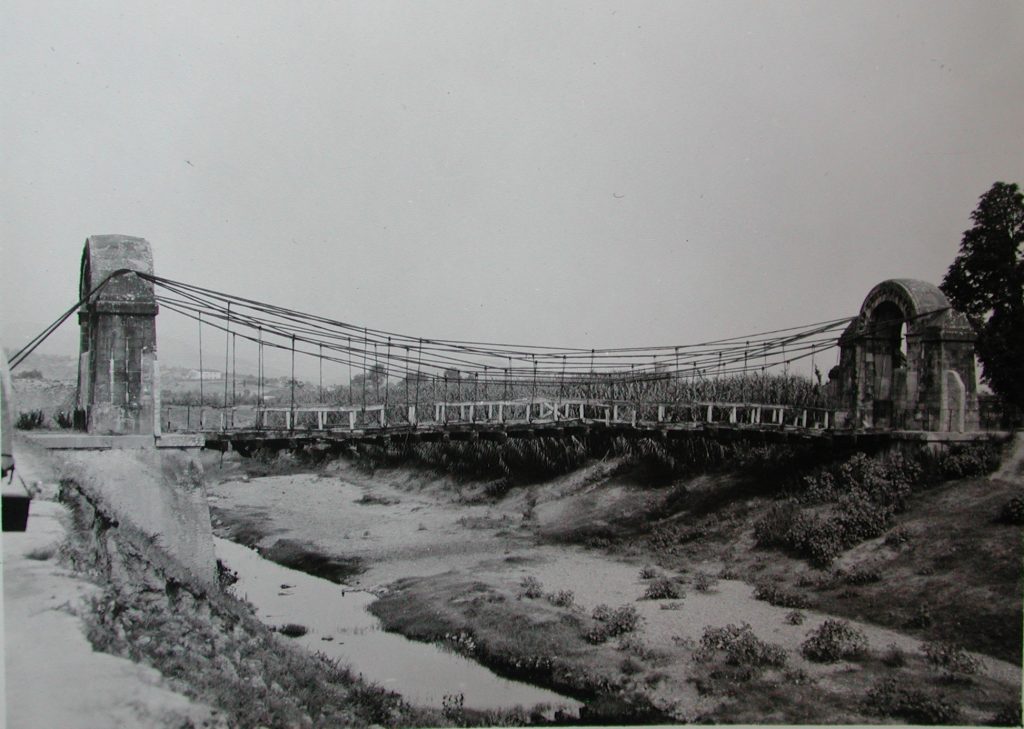Ponte Manetti
ITA – 2010 – Concorso per un ponte ciclo-pedonale sul torrente Ombrone, in luogo del Ponte Manetti (1833) di cui rimangono gli archi di pietra sugli argini. Il progetto è risultato fra i premiati per l’eleganza ma ritenuto di ‘difficile realizzazione’ (?!)
(G. Marucci con E. Piccioni e F. Ciapanna)
Il ponte si innesta su ciò che rimane di un’opera, all’epoca, straordinaria. Ora come allora gli archi di pietra, ancora saldamente fondati sulle sponde opposte del Torrente Ombrone, introducono ad una costruzione moderna e strutturalmente innovativa. Ed è questo l’elemento principale che, nelle intenzioni progettuali, si voleva mettere in luce come integrazione con l’opera ottocentesca: il ponte del Manetti introduceva fra i primi in Europa il sistema con l’innovativa tecnologia dei cavi avvolti, destinata ad essere rapidamente impiegata in numerose altre opere d’ingegneria fino ai giorni nostri. Il progetto del nuovo ponte introduceva un sistema stereotomico di elementi solidi cavi sagomati, tagliati in officina secondo procedure computerizzate, in modo da determinare preventivamente la forma dei singoli componenti, verificarne la stabilità strutturale e semplificare la fase di montaggio in cantiere.
L’intenzione progettuale enfatizza gli elementi di discontinuità fra nuovo e antico, per mantenere viva la tensione della storia intesa nel suo divenire e il rapporto fra la contemporaneità e il passato.
ENG – 2010 – Competition for a cycle-pedestrian bridge over the Ombrone stream, in place of the Manetti Bridge (1833) of which the stone arches on the banks remain. The project was among the winners for elegance but considered ‘difficult to make’ (?!)
(G. Marucci con E. Piccioni e F. Ciapanna)
The bridge is grafted onto what remains of an extraordinary work at the time. Now, as then, the stone arches, still firmly founded on the opposite banks of the Ombrone stream, introduce a modern and structurally innovative construction. And this is the main element that, in the design intentions, we wanted to highlight as an integration with the nineteenth-century work: the Manetti bridge introduced among the first in Europe the system with the innovative technology of coiled cables, destined to be quickly used in numerous other engineering works up to the present day. The design of the new bridge introduced a stereotomic system of shaped hollow elements, cut in the workshop according to computerized procedures, in order to determine in advance the shape of the individual components, verify their structural stability and simplify the assembly phase on site.
The design intention emphasizes the elements of discontinuity between new and old, to keep alive the tension of history understood in its becoming and the relationship between contemporaneity and the past.








